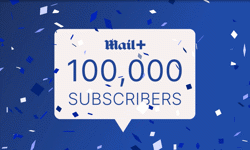The main threat facing national newspapers is as obvious and old as it is intractable. It is that paper circulations which produce more than 80 per cent of advertising revenue will continue to decline at rates far faster than the ability of online and mobile to replace lost revenues.
It's completely marvellous, of course, that newsbrands in all their manifestations are enjoying the greatest reach and perhaps even impact in their history but it will count for little in the longer term in maintaining the funding for well-trained teams of journalists if the half-life of printed editions should turn out to be little more than five years.
The ultimate threat is that paper circulations will one day fall to such an extent that the production process will become economically unsustainable - certainly on a daily basis - before online offers, if it ever does, a viable alternative.
Luckily, the challenge is well understood and there are signs that the industry is becoming more imaginative in finding ways of dealing with it and developing new streams of revenue. There are even some modest signs that, at the very least, the rate of decline is starting to ease with the hope that a point of equilibrium will be reached before it is too late.
Online subscriptions, or more probably hybrid variants, are clearly part of the answer at the high end of the market, while mass market publications will have to find ways to improve their methods of maximising advertising yields.
One associated idea than can be extended is the concept of the newspaper as a club of like-minded individuals who enjoy privileges and can be sold extra services. Live events and festivals, as demonstrated by papers such as The Times, Guardian and Evening Standard look particularly promising and could provide a more important stream of revenue in future. Live events are increasingly big business across the world and newspapers can offer a unique combination of relevance, legitimacy and expertise.
Mobile, and the imminent arrival of universal smartphone mobility in particular, offers a new dimension for newsbrands, although the old challenge remains of turning presence into revenue.
One of the greatest opportunities will flow from better research, and to some extent it already has. Influential marketeers such as WPP’s Sir Martin Sorrell have changed their mind and noticed the superior time and engagement readers give to newspapers when compared to aiming advertising at online robots or those whose attention span is measured in seconds.
Perhaps the greatest hidden opportunity and largest potential gain in an increasingly digital world will come from doing everything possible to protect newspaper sales - because print is where the money lies, at least for the foreseeable future.










